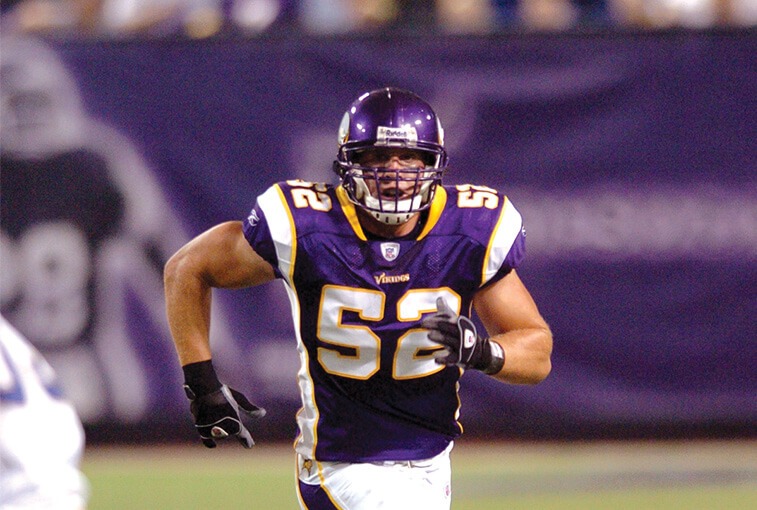It’s a question that has gained a lot of public attention, and one I am frequently asked.
After being a collegiate football player and spending the majority of my 24 years on earth thinking, talking and playing football, it is normal that people would ask me this question.
However, I do not have any children, so my answer is skewed. It’s usually along the lines of, “Well, I don’t have any kids, but if I did, I would let them choose if they would want to play or not, this game is not for everybody.”
Parents have an emotional investment in their kids. This isn’t groundbreaking news to folks with children. You want the best for them. You want them to have the best opportunities and to help them achieve an optimal life, whatever that may look like.
Even at a light-hearted press conference last week before Super Bowl 52, halftime performer Justin Timberlake said of his 2-year-old son, Silas, “Uh, he will never play football, no.”
This spotlight shines just weeks after news broke that NBC sportscaster Bob Costas would not be covering the Super Bowl. Speculation arose from NBC’s decision, citing comments Costas made about the NFL and concussions during a November panel discussion. Costas said the decision was mutual.
“I have addressed the issue of football and its undeniable connection to brain trauma many times. Why? Because the evidence is overwhelming and the effects are often devastating. It’s the elephant in the stadium at every game whether others choose to acknowledge it or not. And it’s not going away,” Costas told the Sports Business Journal.
Nevertheless, with the increase in media coverage and the way we access our information, an environment has been created with a heightened awareness about the long-term effects the sport of football can cause.
We see the reports every other day. Athletes like Junior Seau, Dave Duerson and even Aaron Hernandez are high-profile confirmed cases of chronic traumatic encephalopathy, or CTE. A research study posted last summer by Boston University School of Medicine and the VA Boston Healthcare System examined 202 brains of football players at all levels and determined that 87 percent of athletes were diagnosed with post-mortem CTE.
Staggering numbers, yes. But, before jumping to conclusions, it’s always important to evaluate the information from different angles.
‘Bowling ball on a drinking straw’
Sanford Health neuropsychologist Kate Higgins, Psy.D., said concussion research continues to evolve, and parents are obviously concerned over the possibility of long-term effects the sport can cause.
Would she let her kid play football?
“Well, I don’t have kids, which is an important distinction,” Higgins said. “I think there are some good reasons to remove tackling from football for younger kids, one of which is biomechanics. When you put a football helmet on an 6-year-old, you basically get a bowling ball on a drinking straw. But the physical, social and emotional advantages of sport can’t be understated, especially in our increasingly overweight and socially disconnected society.
“Overstated and overgeneralized research conclusions has created a lot of the fear surrounding the topic of concussions,” Higgins said. “There are large holes in the research on long-term effects of concussion that have yet to be filled. Also, concussion management today is very different than it was 10 years ago, so we don’t know how research done to older football players applies to young football players.”
Ultimately, a change in the way we view concussions is part of a larger process of educating athletes and parents. Providers and the people involved in youth sports have become more educated on the signs, symptoms and treatments of concussions.
“We’ve seen vast improvements in education for adults involved in youth sports, coaches, parents, refs, etc. It’s becoming more culturally appropriate and accepted to seek care. There’s a lot of scare around concussions, but the science behind it has vastly improved even over the past 15 years. The information coming out now is based more on research rather than expert opinion. Which helps diagnose and treat concussions in a way that was not possible even five years ago,” Higgins said.
No longer are the days we see athletes being diagnosed with concussions and exiled to a cocoon. Isolated in a room with no light or people to talk to, which leads to lasting symptoms of depression and anxiety. “Now we follow more of a rehab model in post-concussion protocol,” Higgins said.
Advancements in concussion management and awareness have allowed more access to objective testing that enables athletes a full recovery in the return to play process. “One of the things we can continue to do to move the needle on these advancements is educate our providers, our athletes and those adults involved in youth sports,” Higgins said.
Concussion studies panel
Sanford Health and Argus Leader Media have teamed up to help this process of educating the public with a free event on Sunday, Feb. 11, at the Sanford Pentagon.
Ahead of the Game: How Concussion Studies Can Make Sports Safer will feature a panel discussion with former all-pro NFL linebacker Chad Greenway, Sanford POWER Riggs Premier Football Academy coordinator Kurtiss Riggs, Augustana University head football coach Jerry Olszewski, Thanye Munce of the Sanford Sports Science Institute and Dr. Higgins. Argus Leader columnist Stu Whitney will serve as moderator.
More:
I’m a brain scientist and I let my son play football (Yahoo Sports)
The latest brain study examined 111 former NFL players. Only one didn’t have CTE. (Washington Post)
…
Posted In Health Information, Healthy Living, Orthopedics, Sanford Sports
